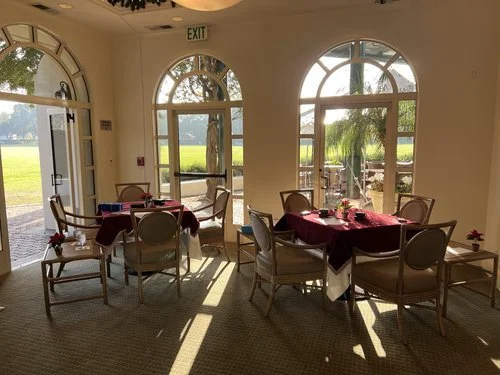This Week in Bridge
(408) Splinter Bids by Responder
© AiB Robert S. Todd
Level: 5 of 10 (2 of 6) robert@advinbridge.com
General
Jacoby 2NT is an excellent convention for exploring slam when partner opens the bidding with 1-Major, but we need even more bidding tools to allow us to explore slam. The “cousin” of Jacoby 2NT is a Splinter Bid. Traditional Major suit splinters are made in response to 1-Major opening bids. Just like Jacoby 2NT, these splinters are artificial bids that show at least 4-card support for Opener’s Major suit and game forcing values, allowing the partnership to explore for slam below the level of game. A splinter differs from Jacoby 2NT by Responder showing shortness instead of asking for it – allowing Opener to make the decision about the possibility of slam. Let’s see how this works.
Splinter Bids in Response to 1-Major Openings
A splinter bid by Responder is a special conventional bid that shows:
Minimum game forcing values (usually about 11-14 HCP).
4+card support for Opener’s Major suit.
A singleton or void (S/V) in a side suit – (not usually an Ace or King).
A splinter in response to Opener’s 1-Major bid is a double jump shift.
1♠ 2♣ Shift – Natural and Game Forcing (playing 2/1 GF)
1♠ 3♣ Jump Shift – Weak, Strong, or Invitational based on partnership agreement.
1♠ 4♣ Double Jump Shift – Splinter
Here are the splinter responses after a 1-Major Opening bid from partner:
1♠ __?
4♣* Minimum game forcing values (11-14 HCP), 4+card ♠, S/V in ♣
4♦* Minimum game forcing values (11-14 HCP), 4+card ♠, S/V in ♦
4♥* Minimum game forcing values (11-14 HCP), 4+card ♠, S/V in ♥
1♥ __?
3♠* Minimum game forcing values (11-14 HCP), 4+card ♥, S/V in ♠
4♣* Minimum game forcing values (11-14 HCP), 4+card ♥, S/V in ♣
4♦* Minimum game forcing values (11-14 HCP), 4+card ♥, S/V in ♦
Notice that these bids are limited to about 14 HCP. This is because a bid that eats up so much bidding space (as does a double jump shift) should be a “picture bid” – precisely defining the hand in both strength and shape and allowing partner to make a good decision about what to do next.
Splinters are powerful bids that show most of the features of Responder’s hand in one call. This leaves Opener well positioned to make a good decision about the possibility of slam. If the hands fit together well, then slam may make with fewer HCP; if the honors do not fit together well (lots of wasted values), then game may be difficult even with 25+ HCP.
More Splinters – Splinters by Responder after 1-minor Opening
When partner opens the bidding with 1-minor, then a double jump shift is a splinter bid just as if partner had opened a 1-Major.
These double jump shifts, splinter bids, after a 1♣ opening bid are:
1♣ __?
3♦* Minimum GF values (11-14 HCP), 6+card ♣ suit, S/V in ♦
3♥* Minimum GF values (11-14 HCP), 6+card ♣ suit, S/V in ♥
3♠* Minimum GF values (11-14 HCP), 6+card ♣ suit, S/V in ♠
These bids all show a S/V in the suit bid, 11-14 HCP, and a large fit for Opener’s suit – usually a 6+card ♣ suit. Additionally, this splinter agrees with Opener’s minor suit, showing no interest in a Major suit --denying a 4-card Major.
When partner opens the bidding 1♦, then the double jump shift that are splinters are:
1♦ __?
3♥* Minimum GF values (11-14 HCP), 5+card ♦ suit, S/V in ♥
3♠* Minimum GF values (11-14 HCP), 5+card ♦ suit, S/V in ♠
These splinters agree with Opener’s minor suit, showing no interest in a Major suit and denying a 4-card Major.
All these splinter bids show a large minor suit fit and game forcing values. With a large minor suit fit, 3NT is still a likely final contract – if Opener has lots of values opposite Responder’s shortness. Thus, these splinters opposite a 1-minor opening happen below 3NT.
There is another splinter bid after a 1♦ opening bid that goes beyond 3NT:
1♦ 4♣*
This can also be used as a splinter – denying a 4-card Major and showing a fit, values, and shortness. This is usually something like a 3-3-6-1 shape with no interest in playing 3NT (a rare hand), interested in a Diamond slam.
Conclusion
Splinter bids are very useful conventions because with one bid they show Responder’s fit, game forcing values, and shortness (S/V) – insisting on game and allowing the Opener to decide about slam at a low level. After Responder makes a splinter bid, Opener is then in a good position to decide if slam is a good contract, or whether we should just stop in a game. Learning to make use of splinter bids is one of the best ways to improve your slam bidding. Try adding these (and their many variations) to your bidding system!

